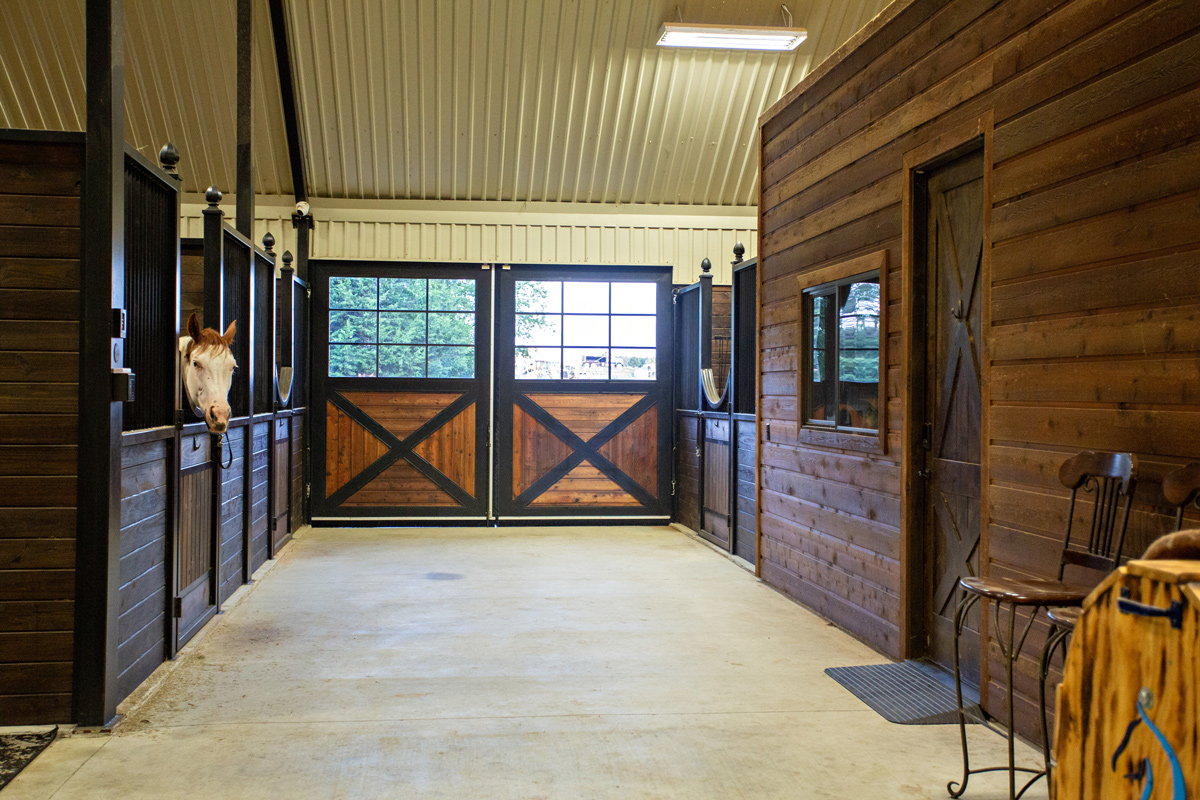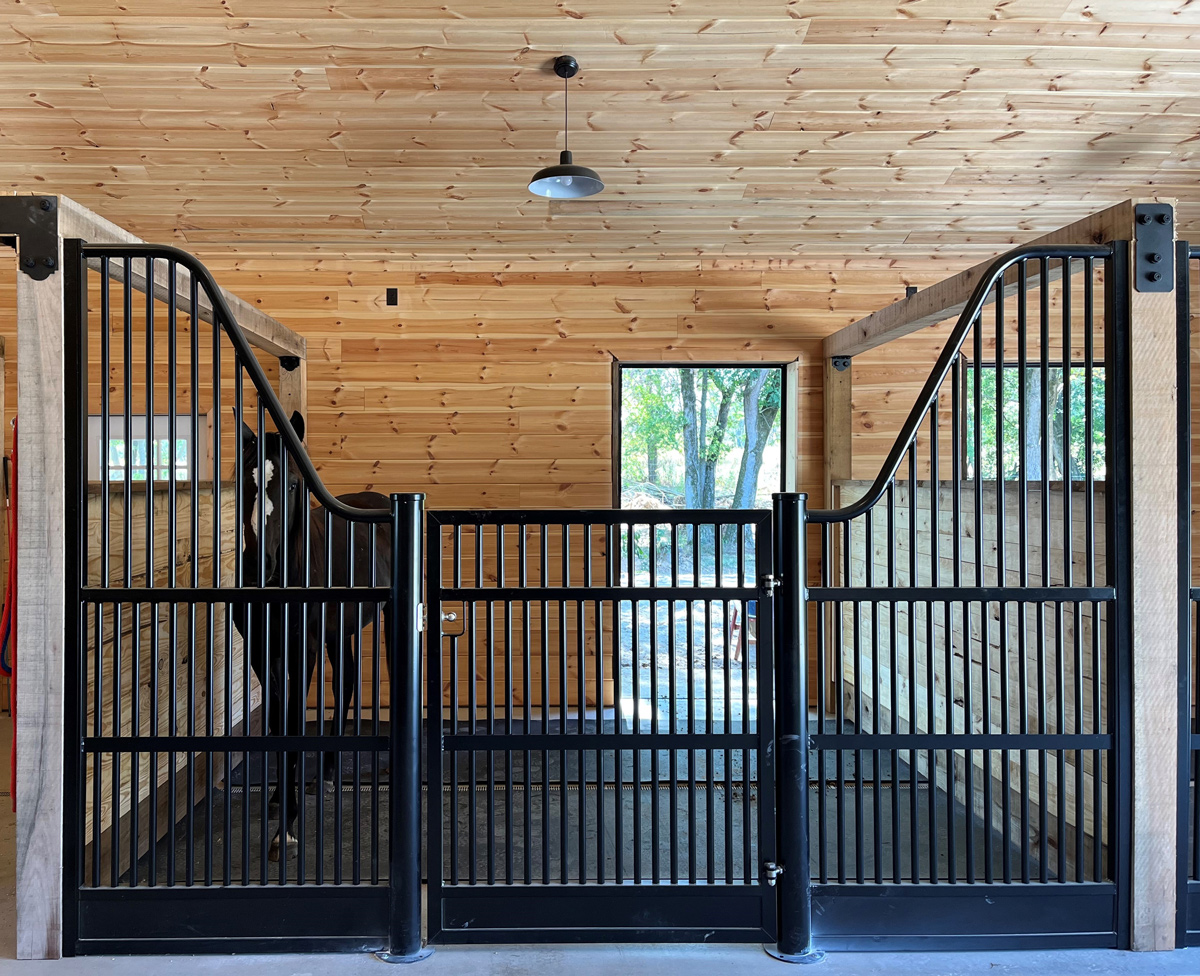As all barn owners know, the type of footing you choose for your horse’s stall is a big decision. When you have large, accident-prone animals walking and turning in confined spaces, footing that has excellent traction, cushion, and durability is a must. While dirt and concrete floors are common in many stables, horse stall mats are the best option to keep your horse healthy and happy.
Dirt Floors Hold Onto Bacteria and Odor
Building a barn is an expensive endeavor and some barn owners may be tempted to cut costs by skipping the installation of proper flooring in their horse stalls. Many equestrians think that dirt floors offer adequate drainage and are softer than concrete, so therefore their horse should be comfortable. Besides, if horses are used to living outside on the dirt, what’s the difference?
The reality is that there’s a very big difference between a horse on a pasture and a horse in a stall on a dirt floor. Dirt does not provide adequate drainage and will trap odors and bacteria deep within the soil. Plus, without the cushion provided by stall mats, the soil gets packed down by the weight of your horse walking and laying down until it closely resembles concrete.
If you have a horse who paws or is a stall walker, your dirt floors will quickly become uneven and filled with holes. The horse will naturally only pack down the dirt in the areas they use the most, creating a stall with highs and lows and lots of tripping hazards. Altogether, dirt floors are not a good option for horse stalls, as you will wind up with an uneven floor that smells awful and hosts harmful bacteria.
Concrete Creates Sore Horses
Concrete alone is not a good option for stall flooring. Notorious for becoming slippery when wet, concrete can actually be quite dangerous. A horse on unstable footing is more likely to become anxious and fall down, potentially injuring themselves or others. While concrete does not hold onto odor, it also does not provide adequate drainage. The result is that any time your horse urinates, the floor will become slippery.
In order to keep your horse comfortable with a concrete stall floor, you’ll have to use at least double the amount of bedding you normally would. Horses who bed down directly on concrete will develop hock and fetlock rubs, and will become sore due to laying on a surface with no cushion or give.
The benefit to having concrete flooring is that it provides a good base for the installation of horse stall mats or stall mattresses.

Stall Mats Optimize Equine Health & Comfort
Our horse stall mats were designed to meet all of your horse’s needs to keep them happy and healthy. Sterling Equine interlocking rubber mats were built to withstand the daily wear and tear of farm life for a stall mat that will stand the test of time. These horse stall mats are a big step up from dirt or concrete floors. Non-absorbent, antibacterial, and anti-fungal, your horse will be grateful for a well-cushioned floor that provides the traction they need to stand up and lay down with ease.
If your horse is prone to hock and fetlock rubs, consider installing a stall mattress. The StableComfort horse stall mattress cuts down on the amount of bedding you need to use, thanks to its ergonomic design and wall-to-wall installation. This type of horse stall mat is ideal for horses who are recovering from an injury or who have stiff joints.
If you’re searching for the best horse stall flooring solution for your horse’s stall, we can help you find the perfect fit. Whether you need PermaGrid, StableComfort, or our premium horse stall mats, our expert team will be able to help you choose the ideal solution for your needs.
